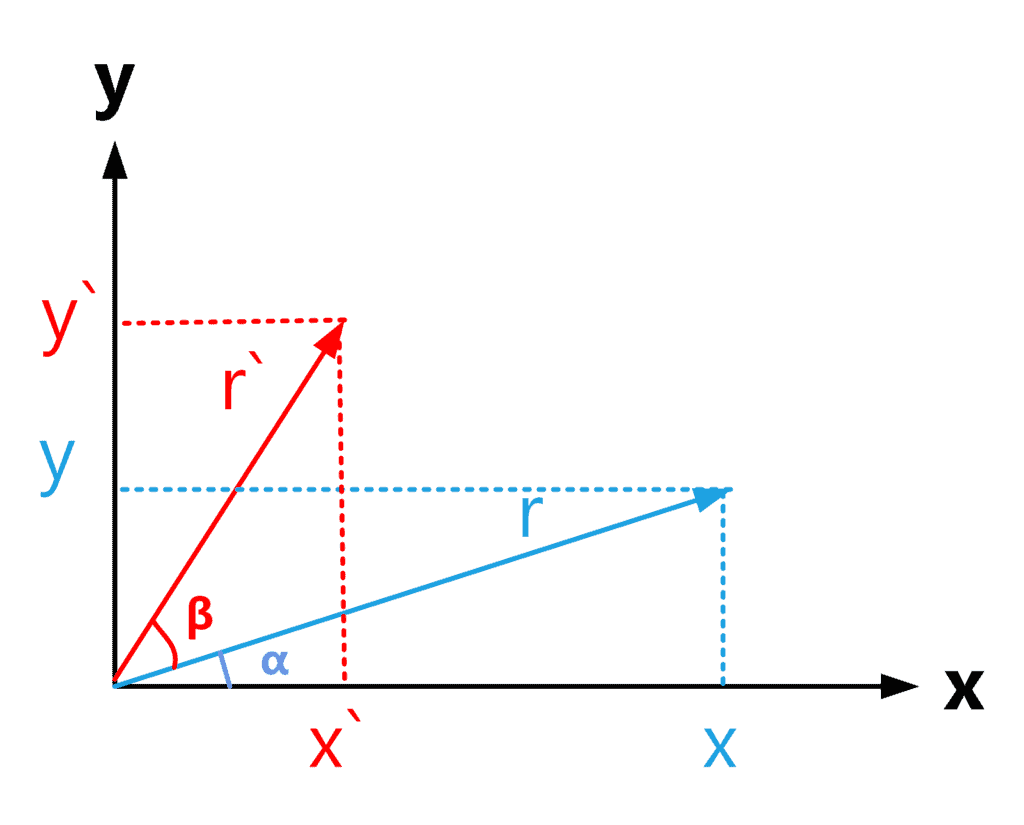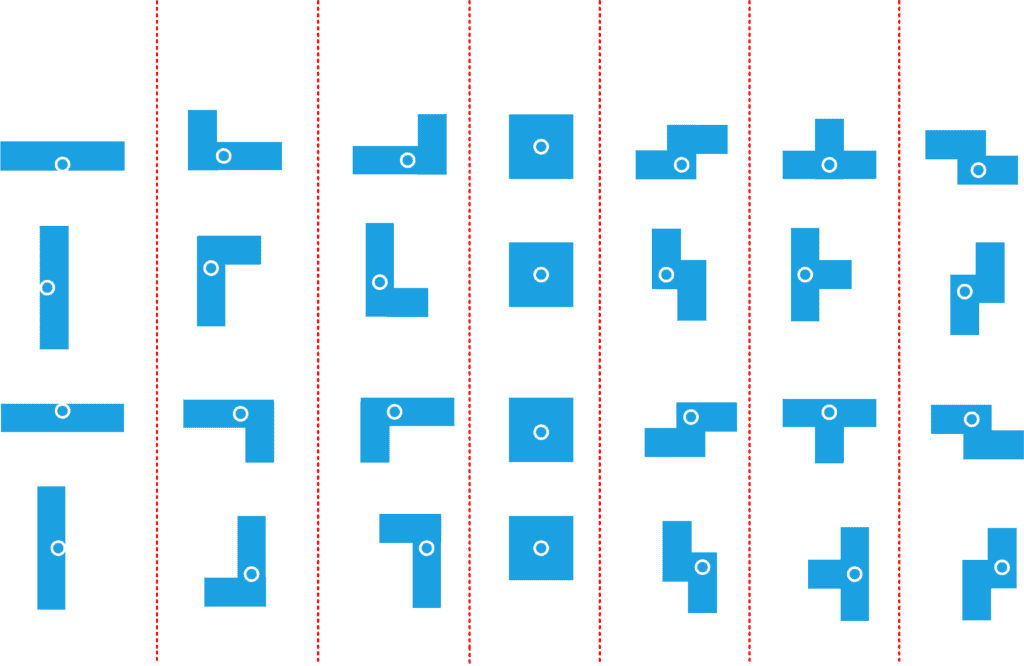1. Overview
In this tutorial, we’ll discuss the algorithm behind rotating Tetris pieces. We’ll start by discussing the equation for rotating a shape in general. Then, we’ll define a data structure that can be used to manipulate the Tetris pieces’ rotations.
Finally, we’ll present the algorithm to rotate a Tetris piece and finish with a quick conclusion.
2. Rotating a Shape
First, let’s define the problem from a logical and mathematical point of view. Then, we can extract the general equations to rotate a point in the cartesian coordinate system.
2.1. Defining the Problem
The Tetris game consists of the following 7 main shapes:

Each shape can be rotated and then put on top of others to form straight lines. The allowed rotations for each piece are 90, 180, 270, and 360 degrees, which is the original orientation of the shape. This tutorial discusses the general algorithm to rotate any of the mentioned pieces.
The algorithm should rotate a given Tetris piece by 90 degrees. Calling the algorithm multiple times will generate all the possible rotations for the given piece. As a start, let’s discuss the general rotation equations and then see how to apply them in the intended algorithm.
2.2. Mathematical Representation
Since each Tetris piece is a polygon, rotating each of the polygon’s corners alone should give us the resulting rotated piece. Therefore, in this section, we’ll discuss the equations to rotate a point around the origin of the cartesian coordinate axis.
Let’s take a look at the following figure:

In the coordinates above, we have point forming an angle
with the x-axis. For simplicity, we’ll consider the point as a vector with magnitude
. Using this representation, we can define equations for
and
as follows:
2.3. Rotating a Point
After defining the equations to represent a point in the coordinate axis, let’s rotate the point to new coordinates
. The rotation is shown in the following shape:

The original point was rotated by degrees to the new coordinates
having a new magnitude of
. We can see that the new point forms an angle
with the x-axis. Likewise, we can define equations for
as follows:
2.4. Rotation Equations
To find the rotation equations, we need to find and
as functions to the original coordinates
and
. To do this, we’ll use the following known equations of
and
for the sum of two angles:
Additionally, rotating a vector doesn’t change its magnitude. Therefore, the following equation applies:
Now, we can use the above equations to rewrite our formula for and
:
We can simplify them using the equations we defined in section 2.2 to the following ones:
Now, we can use these equations to create an algorithm that can rotate a Tetris piece. Let’s start by defining the data structure to store the pieces.
3. Structure Definition
We need to define the structure that will store the Tetris pieces. To do that, we can define each shape as a set of points which are the corners of the shape. In addition, the structure must support rotating the Tetris pieces.
It’s worth noting that Tetris pieces are rotated around their origin. Therefore, we need to define the center point for each shape as well. Take a look at the following figure that shows the different rotations of each shape along with its origin:

Therefore, for each shape, we’ll have an array containing the shape’s corner points and a variable
containing the shape’s origin. Now that we defined the structure, we can move into implementing the rotation algorithm.
4. Algorithm
To implement a rotation algorithm, we only need one function called , which rotates the given shape by the given angle. Note that the piece is not initially located at the coordinated axis’s center. Therefore, the algorithm must shift the shape to the center of the coordinate axis, perform the rotations, and then shift the point back.
Let’s take a look at the algorithm:
algorithmRotateTetrisPiece(points, origin, beta):
// INPUT
// points = the array of points representing the Tetris piece
// origin = the origin point of the shape
// beta = the rotation angle
// OUTPUT
// rotatedPoints = the new coordinates after rotating the Tetris piece
rotatedPoints <- { }
for i <- 0 to points.size() - 1:
x_0 <- points[i].x - origin.x
y_0 <- points[i].y - origin.y
x` <- x_0 * cos(beta) - y_0 * sin(beta)
y` <- x_0 * sin(beta) + y_0 * cos(beta)
x` <- x` + origin.x
y` <- y + origin.y
rotatePoints.add(x`, y`)
return rotatedPoints
The function takes the array of points, the origin of the shape, and the rotation angle as input. We start by defining
, which will hold the resulting rotated points. Note that the origin stays the same after the rotation, so we don’t need to return it.
Next, we iterate over all the points of the shape. We need to shift each point as if the shape’s origin is moved to the centre of the coordinate axis. If the origin is moved to the centre, then it shifts to point . At this time, the point will also shift with the same amount. Therefore, we shift the point by
. As a result, we define
and
, which are the shifted coordinates.
Then, we perform the rotation by defining and
which are the coordinates for the rotated point, by applying the equations from section 2. After that, we shift the new points
and
back away from the centre of the coordinate axis. Finally, we add the new points to the list of rotated points we created.
In the end, we return the resulting as the new shape corder points after performing the rotation.
5. Conclusion
In this article, we discussed the algorithm for rotating Tetris pieces. We started by discussing the rotation problem in general and then moved to define the structure that stores the Tetris pieces and the algorithm for rotating them.